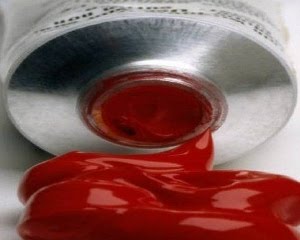Deciding on whether to use a vertical or horizontal composition is pretty straightforward. The size and shape of the subject will determine how it should best be framed. This is how it usually works, but occasionally, I'll come across a subject that refuses to play nice and be placed in a neat little box. Such was the case a few weeks ago when I tried to photograph a cluster of white Easter lilies in the New York Botanical Garden.
I was initially attracted to them because they were surrounded by a bunch of smaller, colorful flowers – objects that could be used as interesting foreground and background elements. My first composition was a horizontal, highlighting the three lilies at the top. I positioned my tripod at a height to include the small purple flowers in the foreground in the lower left, with the small orange flowers in the background in the lower right. I deliberately covered some of the lilies with the purple flowers, but I was careful not to let the lilies overlap the orange blooms in the background. I'm not sure if it's an actual rule in nature photography, but subjects tend to look better when partially obscured by something in the foreground, as opposed to blocking something in the background. Of course, this only works when the main subject isn't forced to compete for attention with these other elements. I used my depth of field preview to select an aperture that would render everything but the lilies out of focus.
The end result was OK, but I knew I could do better. My main problem was the large black area in the upper right. I felt it threw off the entire compositional balance of the photo. I could have lowered the angle, but I didn't want to clip off the top petal of the lily on the left. I then tried a vertical composition and zoomed in slightly on the center lily – maintaining similar positions for the foreground and background flowers. I thought it was quite fortuitous for my little bee buddy to visit at the precise moment I was set up for a close up, but I was still stuck with that large, annoying black area. Although it provides great copy space should these photos ever be featured on a greeting card or magazine cover, they're still off-balanced as stand-alone photographs.
I finally decided to abandon my original plans for the placement of the small purple flowers. I kept the vertical format, but slightly changed my position and zoomed out to include more of the flowers in the background. This considerably improved the overall balance of the photo. There's still a black area in the upper right, but it's been reduced to a much more reasonable size and can still be used for copy space if necessary.
This whole process is known as "working the subject." It sort of reminds me of my days in grade school math class, when I was often told to "show my work." I go through this almost every time I take a photo, but it's usually just a mental process – rarely resulting in actual photographs. Since the images in this case all had something different to offer, as a whole, I felt they created an interesting "building-block" series.
Article Submitted by:
F.M. Kearney is a fine
art nature photographer, specializing in unique floral and landscape images. To
see more of his work, please visit www.starlitecollection.com.














































